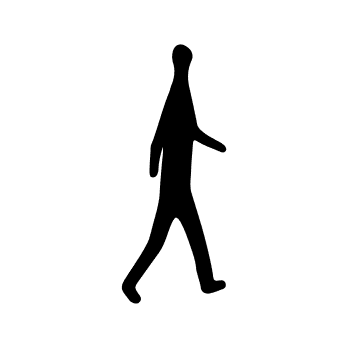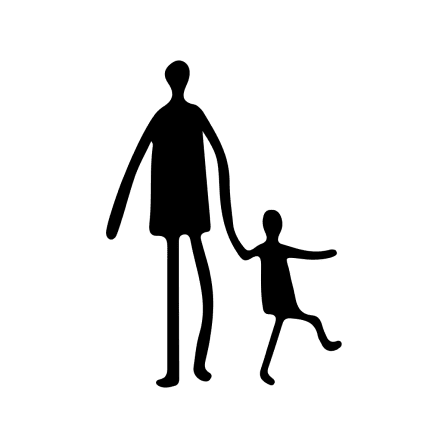

Impact Justice presents
The Things They Carry
Understanding Trauma, Men and Cycles of Violence
The epidemic of violence in the United States is concentrated among boys and men.
Keep scrolling
In 2021, boys and men were the aggressors in more than 3 out of 4 of the 4.4 million non-deadly victimizations...
...and were the victims in roughly half of these violent incidents.
The gender disparity is even more stark when looking at homicide, where boys and men made up 78% of all known aggressors...
...and 78% of all victims.
Males were also four times more likely than females to take their own lives, accounting for the vast majority of the 47,646 documented suicides in 2021.
What if trauma, stemming from events experienced long ago, is partly fueling this violence?
In 2021, researchers at Impact Justice began surveying and interviewing men about experiences from childhood and adolescence that might have set the stage for violent crimes they later committed as adults – unlocking their memories to understand trauma among men and cycles of violence. This is what the research revealed.
The physical abuse J.H. vividly recalls decades later is just one type of adverse childhood experience (ACE) documented in prior studies. The largest study to date, undertaken by the Centers for Disease Control and Prevention, consists of 16 ACEs that encompass different kinds of potentially traumatic early life experiences.
Learn more about the CDC’s research on ACEs and related studies.Children are remarkably resilient and can overcome even very difficult experiences, but a child’s defenses are no match for a slew of ACEs or any one type that is frequent or severe. In the absence of support and protection, the effects can be life altering, beginning in childhood and for decades after as trauma exacts its toll on the body and mind. Traumatic stress also can lead to aggression.
ACEs are highly correlated with structural racism and poverty, social forces that also have an outsized influence on who ends up in prison, so it’s not surprising that nearly all (94%) of the formerly incarcerated men Impact Justice surveyed recalled at least one of the CDC’s 16 ACEs.
What is shocking: Fully half of them (50%) reported at least nine ACEs, and some of them as many as all 16. This means that as boys they experienced potentially traumatic events and circumstances across multiple environments, essentially robbing them of any safe place to grow up.
This study suggests that ACEs are far more common among formerly incarcerated men than in the population at large.
Formerly incarcerated men


At least 1 ACE
9 or more ACEs
Adults nationwide


At least 1 ACE before age 18
4 or more ACEs
Sources: Impact Justice and Centers for Disease Control and Prevention

Nearly two out of every three men surveyed (62%) experienced between 5 and 9 different ACES just at home. Being the target of abuse and witnessing it among adults were the most commonly reported experiences.
A parent or caregiver...
Swore at you, insulted you, or put you down?
80%
Pushed, grabbed, shoved, or slapped you?
72%
Acted in a way that made you afraid you would be physically hurt?
72%
Hit you so hard that you had marks or were injured?
62%
Witnessed a parent or caregiver...
Being yelled at, screamed at, sworn at, insulted, or humiliated?
81%
Being slapped, kicked, or punched?
71%
Being hit or cut with an object, such as a stick or cane, bottle, club, knife, or gun?
50%
More than half of the men surveyed (53%) report that such abusive behaviors and dynamics were a routine feature of life at home – so engrained they seemed, at least in retrospect, to be “always” occurring.

Parental neglect, especially the lack of attention and affection, can be just as wounding as physical violence – in some cases more so. Several men who participated in follow-up interviews described feeling as if they were invisible to the adults who should have wrapped them in love and affirmation.
The study also documents rates of sexual abuse that are four times the rate nationally.
Did any adult touch or fondle you in a sexual way or have you touch their body in a sexual way?
Did any adult have (or attempt to have) any type of sexual intercourse (oral, anal, or vaginal) with you?
Rate of sexual abuse nationally

Abusive dynamics that played out behind closed doors had a counterpart in the streets, with nearly half of these men (48%) recalling seeing or hearing someone beaten up, stabbed, or shot.
How often, if ever, did you see or hear someone being beaten up, stabbed, or shot in real life?



Many times
A few times
Once
Never


The presence of a loving, supportive adult is so essential to resilience in childhood, the lack of it is considered to be an adverse experience, one of the CDC’s 16 ACEs. That crucial adult support was inconsistent at best for more than half (57%) of the formerly incarcerated men surveyed.
Deeply wounded and disconnected from the adults in their lives, it’s not surprising that half of them (49%) relied on drugs to numb painful emotions; more than half (62%) experienced bouts of depression; and nearly a third (30%) attempted suicide before age 18, a rate roughly three times higher than the national average.
Formerly incarcerated men who attempted suicide as teens
Teen suicide rate nationally

Collectively, these findings suggest that men whose life paths lead to prison may be living with what the World Health Organization and some others define as Complex Post Traumatic Stress Disorder (CPTSD).While PTSD is the result of an isolated traumatic event, CPTSD is the result of traumatic environments that repeatedly expose individuals to damaging circumstances and events.
The traumatic childhood experiences these men recall occurred many years ago, but their experiences and insights are acutely relevant today in the context of elevated levels of violence nationwide. They remind us that men who lash out are often deeply wounded themselves. Equally important, some of these men are also living examples of the power of healing.
Individuals and whole communities directly impacted by violence have long understood the power of healing and worked to put that knowledge into practice. Research, resources, and public support are finally catching up.

Programs that feature cognitive behavioral therapy as a response to the lingering effects of trauma show particular promise. A study of the Chicago-based program READI released earlier this year found that participating young men were nearly two-thirds less likely to be arrested for a shooting and nearly one-fifth less likely to be shot.
In Sacramento, Advance Peace reduced homicides and non-fatal shootings by 20 percent and for every dollar spent saved between $10 and $41 on emergency responders, health care, law enforcement, and other legal system responses.
Molly Baldwin, founder of Roca, another successful program for young men coping with trauma, sums it up well: “What we know changes behavior is people feeling safe, being able to manage their emotions and begin to heal.”
Also encouraging, programs like these and other community-based approaches to violence prevention appeal to both the public and government.
71% of likely voters believe that helping people who are likely to engage in violence is a good way to build safer, stronger communities.

The 2021 American Rescue Plan Act expanded funding for community-based approaches to violence prevention.
This is just the beginning. To end cycles of violence, boys and men of all ages need pathways to safety and healing. This includes the 1.1 million men currently in prison. Many of them are parents, and virtually all of them will come home.
